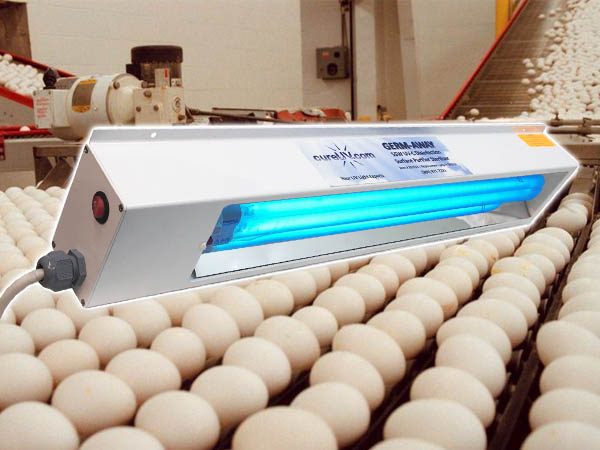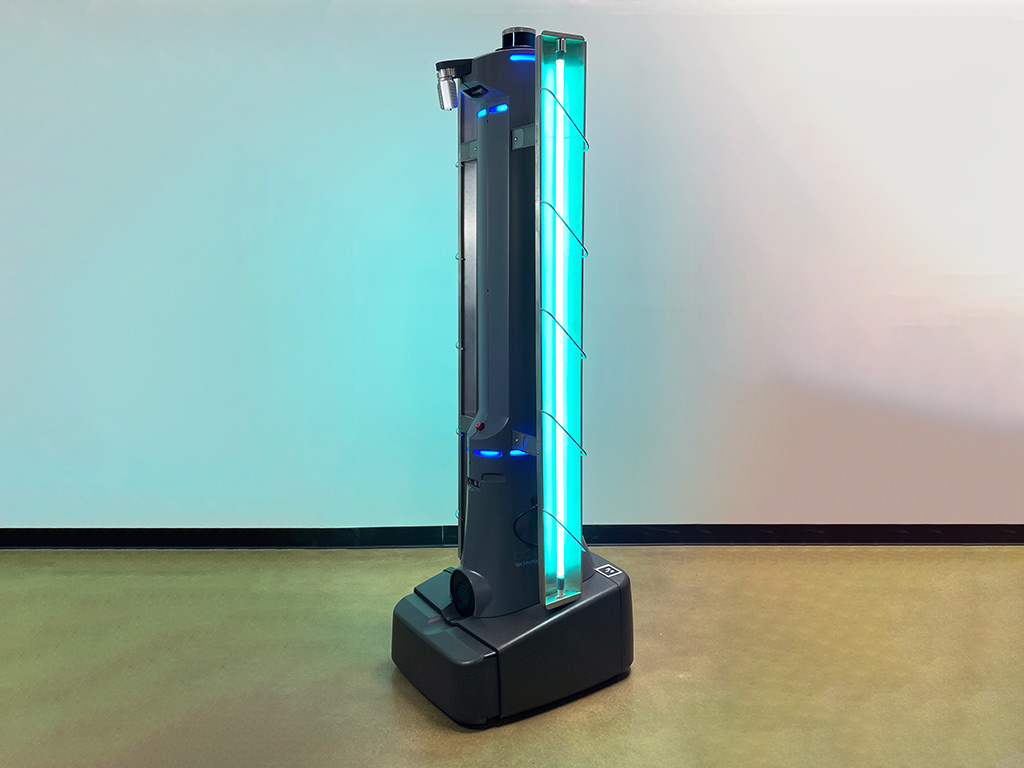Far-UVC UV Sanitizers: A Positive Technique to Preserving Tidiness and Security
Far-UVC UV Sanitizers: A Positive Technique to Preserving Tidiness and Security
Blog Article
Discovering the Perks of Far UVC Light: Changing Indoor Air Top Quality
Indoor air top quality has actually always been a worry, yet the existing global health and wellness situation has brought it right into sharper focus. As we navigate the difficulties of a post-pandemic world, locating cutting-edge solutions to improve air quality has actually come to be paramount. One such service that has gotten interest is Much UVC light. This sophisticated technology has the possible to revolutionize indoor air quality by efficiently reducing the effects of airborne microorganisms without presenting damage to people. However just how specifically does Far UVC easy work? What are its health and wellness advantages? And exactly how can it contribute to decreasing allergens in our living spaces? In this discussion, we will discover the remarkable globe of Far UVC light and discover its potential in transforming the way we safeguard our interior settings.
Just How Far UVC Light Works
Much UVC easy work by discharging short-wavelength ultraviolet light that has the capacity to permeate and inactivate microbes. Unlike standard UV light, which can be damaging to human skin and eyes, far UVC light has a much shorter wavelength that is absorbed by the outer layers of human skin, preventing it from getting to the underlying living cells. This makes it a reliable and risk-free option for constant disinfection in busy rooms.
When far UVC light is given off, it interacts with the DNA and RNA of microbes, including microorganisms and viruses, interrupting their ability to replicate and creating them to come to be inactive. The high power of the short-wavelength light damages the molecular framework of the genetic material, protecting against the microorganisms from reproducing and spreading.

Additionally, much UVC light can be conveniently incorporated into existing illumination components, making it an economical remedy for a wide range of applications, consisting of medical care centers, colleges, offices, and public transport. Its ability to constantly sanitize busy rooms without posturing a risk to human health makes far UVC light a promising innovation in the field of indoor air high quality monitoring.
Much UVC Light's Effect on Airborne Pathogens
The influence of much UVC light on air-borne microorganisms is considerable in minimizing the transmission of transmittable conditions and improving indoor air quality. Much UVC light describes a details series of ultraviolet light that has a wavelength in between 207 and 222 nanometers. Unlike standard UVC light, which is unsafe to human skin and eyes, much UVC light has been found to be secure for human beings while still being reliable versus microorganisms.
Research studies have shown that much UVC light has the capacity to inactivate a wide variety of air-borne infections, including the flu infection and the coronavirus (far-uvc). These pathogens are transferred via respiratory system droplets, and by utilizing much UVC light, it is feasible to decrease their viability and avoid their spread
One of the essential advantages of utilizing much UVC light is its capacity to get to all locations of a space. Unlike various other disinfection methods that might have restricted reach, much UVC light can be mounted in overhead illumination fixtures, guaranteeing that the entire area is dealt with. This makes it especially reliable in crowded locations such as healthcare facilities, colleges, and mass transit.
Furthermore, far UVC light can be used continually without positioning a risk to human wellness. It can be executed as component of an extensive approach to enhance interior air high quality by reducing the focus of airborne microorganisms. By incorporating far UVC light right into existing ventilation systems, it is feasible to create much safer and much healthier indoor settings.
Health Perks of Far UVC Light
Utilizing far UVC light gives various wellness advantages, making it an important tool in advertising public health and security. Much UVC light has actually been found to successfully eliminate airborne microorganisms, such as viruses and germs, without damaging human skin or eyes. This makes it a suitable remedy for disinfecting indoor atmospheres and lowering the risk of infections.
One of the crucial wellness advantages of far UVC light is its capability to battle the spread of airborne diseases. Research studies have actually revealed that much UVC light can properly suspend infections like influenza and tuberculosis. By setting up far UVC light components in public rooms, such as medical facilities, offices, and institutions, the transmission of these conditions can be dramatically minimized.
In addition, much UVC light has actually been discovered to be risk-free for continuous exposure, as it does not cause skin damages or boost the danger of skin cancer. This is due to the fact that much UVC light has a minimal series of penetration in human skin, avoiding any injury to much deeper layers.
Along with its straight effect on airborne pathogens, much UVC light can additionally have indirect web wellness benefits. By decreasing the presence of harmful microorganisms airborne, it can enhance indoor air quality, bring about a reduction in breathing symptoms and allergic reactions.
Much UVC Light's Role in Reducing Irritants

Much UVC light, with its wavelength in the series of 207 to 222 nanometers, has actually been shown to be reliable in inactivating fungi, viruses, and microorganisms. Current research studies have actually also revealed that it can effectively minimize the visibility of allergens in interior rooms. When far UVC light is released, it interacts with the DNA and RNA of bacteria, harming their hereditary material and avoiding their duplication.
Much UVC Light's Potential in Public Spaces
With its tested performance in reducing allergens and suspending microorganisms, far UVC light holds terrific potential for application in public spaces. Public areas, such as health centers, airports, offices, and institutions, are often crowded and prone to the spread of airborne illness. Integrating far UVC light innovation in these areas can substantially boost interior air high quality and minimize the transmission of dangerous virus.
One encouraging application of far UVC light in public spaces is in ventilation systems - far-uvc. By mounting much UVC lights in cooling and heating systems, the modern technology can decontaminate the air as it flows, successfully minimizing the concentration of airborne infections and germs. This method can assist prevent the spread of diseases such as flu, covid-19, and tuberculosis, advertising a healthier and safer setting for passengers
Additionally, far UVC light can be used in the sanitation of frequently touched surface areas. High-touch locations in public areas, such as doorknobs, handrails, and lift buttons, can nurture a plethora of microorganisms. By strategically positioning far UVC lights in these locations, the technology can continually disinfect surface areas, decreasing the risk of contamination and transmission.
Moreover, the usage of much UVC light in public rooms is secure for human direct exposure. Unlike conventional UVC light, which can be hazardous to human skin and eyes, far UVC light has been confirmed to be non-toxic and safe for continuous operation in occupied spaces. This makes it a suitable option for boosting interior air top quality without presenting any type of health and wellness dangers to individuals.
Final Thought

Much UVC light works by sending out short-wavelength ultraviolet light that has the capability to penetrate and inactivate microbes. Unlike conventional UV light, which can be harmful to human skin and eyes, much UVC light has a much shorter wavelength that is absorbed by additional reading the external layers of human skin, preventing it from reaching the underlying living cells. Far UVC light refers to a details variety of ultraviolet light that has a wavelength in between 207 and 222 nanometers. Unlike conventional UVC light, which is dangerous to human skin and eyes, much UVC light has been discovered to be secure straight from the source for humans while still being efficient versus pathogens.
Unlike traditional UVC light, which can be unsafe to human skin and eyes, far UVC light has been proven to be non-toxic and secure for constant operation in busy rooms.
Report this page